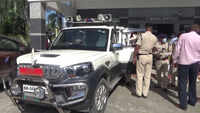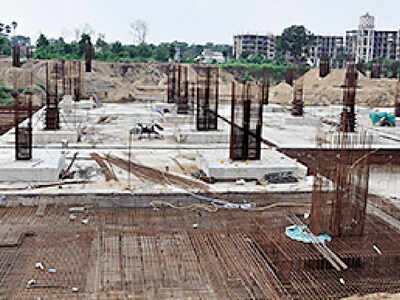
By- Mirza Faizan
PATNA: Born and brought up in Patna and having made a career in the field of aerospace science for over 16 years now, I have always been concerned about flight operations at the airport in my hometown. I am glad to know that currently work is underway for development of a magnificent terminal building at Patna airport, but what great use can that modern terminal building be if the flyers continue to feel the judder every time an aircraft will land on the short and risky runway.
Flight operations are being conducted at Jayaprakash Narayan International Airport, Patna with scope of almost zero margin for error owing to short runway length. In fact, a 6,797ft-long runway is very dangerous for flight operations and perhaps this is the reason that airlines send their most highly trained pilots for flying the aircraft in this sector. It is due to such situations that Patna airport is highly vulnerable for runway excursion like situation, as it happened at Kozhikode airport on Friday evening.
Given the locational constraint for extension of the runway, the authorities can develop an additional intersecting runway. Intersecting runways cross or meet each other within their length and have been developed at many airports across the globe, including Chhatrapati Shivaji Maharaj International Airport, Mumbai, the busiest airport in India.
The biggest factor for developing intersecting runways at Patna is that such runways require comparatively less land. There can be multiple options for developing the intersecting runway. The best possible option, according to me, can be a scissor-type intersecting runway starting from Patna zoo or nearby government areas up to the office of BAMETI in Phulwarisharif. This will not require to touch Delhi-Howrah railway line.
If the authorities want to extend the existing runway itself, they can go for tunnelling of Peer Ali Marg, commonly known as airport road. Like the main runway at Indira Gandhi International Airport in New Delhi, the existing runway at Patna airport can also be extended towards its eastern end over the tunnelled airport road and it can extend inside Patna zoo or nearby areas.
While runway extension or constructing a new runway may take some time, authorities should immediately add engineered materials arrestor system (EMAS) at both ends of the existing runway. According to the Federal Aviation Administration (FAA), EMAS uses crushable material placed at the end of a runway to stop an aircraft that overruns the runway. The tires of the aircraft sink into the lightweight material and the aircraft is decelerated as it rolls through the material. In fact, an EMAS towards the hilltop end of the tabletop runway at Kozhikode could have prevented or at least minimised the impact of the accident.
As per my knowledge, Patna airport was set up in 1973 when smaller aircraft or narrow-bodied aircraft of Bombardier and others used to operate. We cannot keep operating flights with the same length of runway, when the size of aircraft has expanded manifold. To conclude, I expect that the authorities understand the severity of the situation and develop the administrative willpower to resolve the runway issue for ensuring safe and peaceful flight experience here for years to come.
(The writer is a native of Patna and a Texas-based aerospace scientist. He has innovated GRIPS technology, which was designed to prevent runway accidents)
PATNA: Born and brought up in Patna and having made a career in the field of aerospace science for over 16 years now, I have always been concerned about flight operations at the airport in my hometown. I am glad to know that currently work is underway for development of a magnificent terminal building at Patna airport, but what great use can that modern terminal building be if the flyers continue to feel the judder every time an aircraft will land on the short and risky runway.
Flight operations are being conducted at Jayaprakash Narayan International Airport, Patna with scope of almost zero margin for error owing to short runway length. In fact, a 6,797ft-long runway is very dangerous for flight operations and perhaps this is the reason that airlines send their most highly trained pilots for flying the aircraft in this sector. It is due to such situations that Patna airport is highly vulnerable for runway excursion like situation, as it happened at Kozhikode airport on Friday evening.
Given the locational constraint for extension of the runway, the authorities can develop an additional intersecting runway. Intersecting runways cross or meet each other within their length and have been developed at many airports across the globe, including Chhatrapati Shivaji Maharaj International Airport, Mumbai, the busiest airport in India.
The biggest factor for developing intersecting runways at Patna is that such runways require comparatively less land. There can be multiple options for developing the intersecting runway. The best possible option, according to me, can be a scissor-type intersecting runway starting from Patna zoo or nearby government areas up to the office of BAMETI in Phulwarisharif. This will not require to touch Delhi-Howrah railway line.
If the authorities want to extend the existing runway itself, they can go for tunnelling of Peer Ali Marg, commonly known as airport road. Like the main runway at Indira Gandhi International Airport in New Delhi, the existing runway at Patna airport can also be extended towards its eastern end over the tunnelled airport road and it can extend inside Patna zoo or nearby areas.
While runway extension or constructing a new runway may take some time, authorities should immediately add engineered materials arrestor system (EMAS) at both ends of the existing runway. According to the Federal Aviation Administration (FAA), EMAS uses crushable material placed at the end of a runway to stop an aircraft that overruns the runway. The tires of the aircraft sink into the lightweight material and the aircraft is decelerated as it rolls through the material. In fact, an EMAS towards the hilltop end of the tabletop runway at Kozhikode could have prevented or at least minimised the impact of the accident.
As per my knowledge, Patna airport was set up in 1973 when smaller aircraft or narrow-bodied aircraft of Bombardier and others used to operate. We cannot keep operating flights with the same length of runway, when the size of aircraft has expanded manifold. To conclude, I expect that the authorities understand the severity of the situation and develop the administrative willpower to resolve the runway issue for ensuring safe and peaceful flight experience here for years to come.
(The writer is a native of Patna and a Texas-based aerospace scientist. He has innovated GRIPS technology, which was designed to prevent runway accidents)

Coronavirus outbreak
Trending Topics
LATEST VIDEOS
City
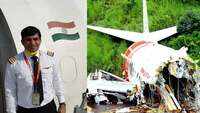 Kozhikode air crash: Deceased co-pilot Akhilesh Kumar survived by pregnant wife
Kozhikode air crash: Deceased co-pilot Akhilesh Kumar survived by pregnant wife 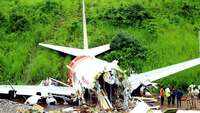 Kozhikode air mishap: Findings of the investigation will be made public, says Civil aviation minister Hardeep Singh Puri
Kozhikode air mishap: Findings of the investigation will be made public, says Civil aviation minister Hardeep Singh Puri 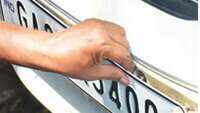 Delhi: No Covid effect? Fancy numbers find takers
Delhi: No Covid effect? Fancy numbers find takers  Delhi govt soon to release draft policy to accelerate growth of startups, CM Kejriwal begins talks
Delhi govt soon to release draft policy to accelerate growth of startups, CM Kejriwal begins talks
More from TOI
Navbharat Times
Featured Today in Travel
Quick Links
Kerala Coronavirus Helpline NumberHaryana Coronavirus Helpline NumberUP Coronavirus Helpline NumberBareilly NewsBhopal NewsCoronavirus in DelhiCoronavirus in HyderabadCoronavirus in IndiaCoronavirus symptomsCoronavirusRajasthan Coronavirus Helpline NumberAditya ThackerayShiv SenaFire in MumbaiAP Coronavirus Helpline NumberArvind KejriwalJammu Kashmir Coronavirus Helpline NumberSrinagar encounter
Get the app
